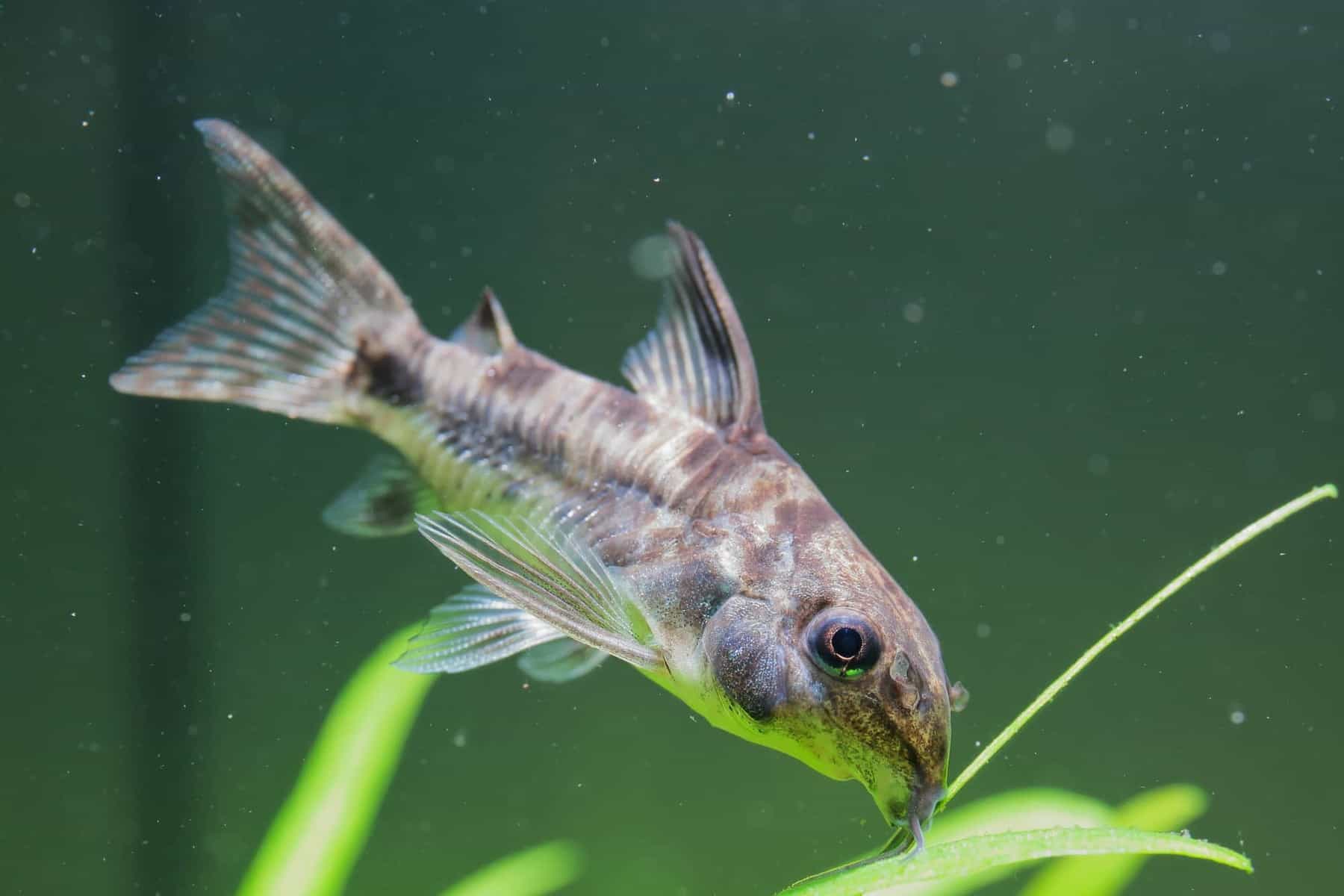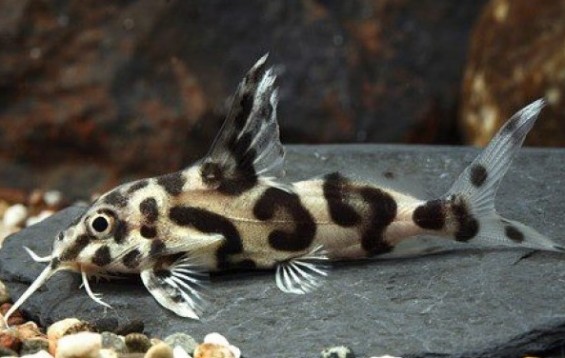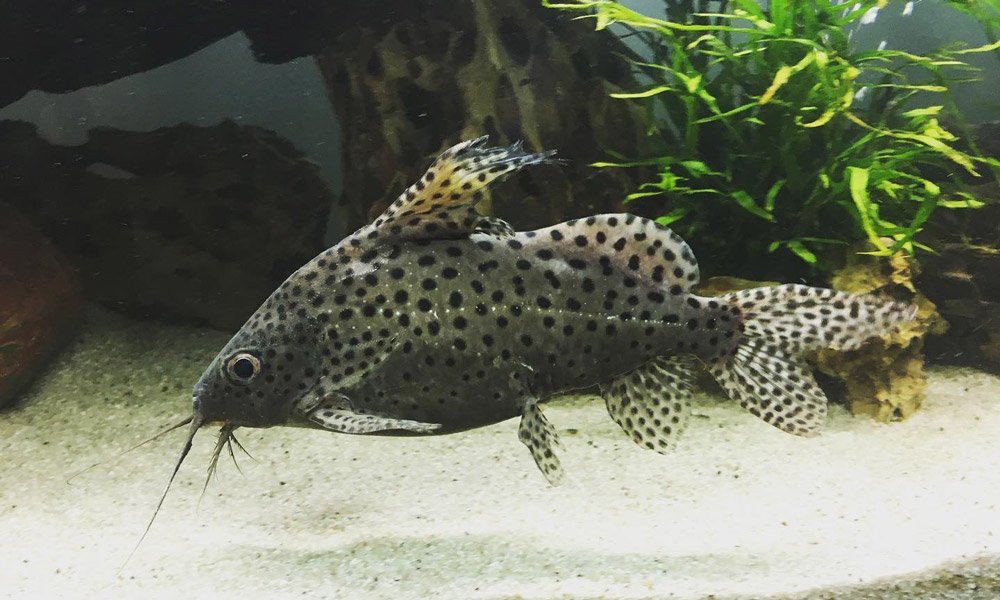
Discover the Beauty of Synodontis Catfish: Essential Care Guidelines

Are you an aquarium or fishing enthusiast? If so, you’ll definitely want to read this blog post because it features some interesting facts about synodontis catfish that will interest both of your interests. For starters, synodontis catfish are freshwater fish that belong to the cichlid family.
Moreover, they are one of the most popular catfishes on the market due to their elegant and attractive appearance.
Not only do synodontis catfish make excellent aquarium fish, but they’re also popular among fishermen because of their strong fighting ability and edible flesh. So what are you waiting for? Read on to learn more about this fascinating fish!

What is synodontis catfish?
Synodontis catfish is a popular fish species in many parts of the world. It’s known for its beautiful coloration and fighting ability. The International Union for Conservation of Nature has classified it as a vulnerable species, which means it’s in danger of disappearing from the wild.
This kind of catfish are ovoviviparous, which means they develop their eggs inside their bodies before giving birth to live young ones. They’re commonly caught using pots or cages set up in fresh water habitats across Africa, Asia, and South America. So, if you’re a fan of aquarium fish or are just curious about synodontis catfish, these 10 interesting facts will be of interest to you!

The Numerous Species of Synodontis Catfish
Synodontis catfish are some of the most popular aquarium fish around. Not only are they beautiful and interesting to look at, but their numerous species come with a wealth of interesting facts that aquarists and freshwater fishermen will enjoy.
For example, some synodontis catfish can grow to be as big as two feet in length! These fish are also quite diverse, with over 100 recognized subspecies.
This means that there is a synodontis that is perfect for your aquarium or freshwater fishery – no matter what your preferences may be.
Another great thing about synodontis is their inquisitive nature and propensity for eating large prey items such as other fish, crustaceans, and amphibians. So, if you’re looking for a fish that is versatile and can provide a lot of entertainment in your aquarium or freshwater fishery, synodontis catfish are a great option!
The Synodontis genus
The Synodontis genus of catfish has a lot to offer aquarium enthusiasts and fish keepers alike. There are over 20 different species in the world, all of which belong to the synodontis genus. Some of these species are well-known for their flashy coloration and large scales.
Some of the more well-known synodontis catfish include the red lionfish, yellow lionfish, and black lionfish.
These fish vary greatly in size, with some reaching up to 2 feet long while others only grow to around 12 inches! Given their diverse nature and impressive feature set, it is no wonder that they have become very popular amongst aquarists worldwide.
What distinguishes the members of the Synodontis genus?
Synodontis catfish are some of the most widely-loved fish in the aquarium trade. They come in a wide variety of colors and patterns, making them perfect for any aquarium. Some species even secrete toxins from their skin that can kill other fish in the tank!
However, Synodontis catfish aren’t just beautiful – they’re also diverse eaters! They are herbivorous and carnivorous, meaning they can subsist on anything from insects to small fish.
In addition to this flexibility in diet, synodontis species are split into two main groups based on where they were first found: African and Asian species. So whichever one you choose, you’re sure to be getting a fantastic pet
reproductive behavior of the synodontis catfish
The synodontis is a barbarian fish that is known for its reproductive behavior. Synodontis catfish are tropical fish that reproduce by internal fertilization. For this process, the male and female deposit their eggs in separate areas of the body of the other fish.
This then allows for one dominant embryo to develop which will take over the reproductive function in that particular group of fish thereafter. Spawning can also occur during non-calm periods when water temperatures are above 25 degrees Celsius (77 degrees Fahrenheit).
Breeding behavior usually occurs between October and January, but there is no set timeframe as it depends on environmental conditions and availability of mates within a group or population respectively.
Mating habits often involve abdominal biting – where one partner wraps its mouth tightly around the anal. So, whether you’re an aquarist or fisherman, be aware of these interesting facts about the synodontis !

Care
Synodontis catfish are one of the most popular fish in the aquarium and fishing pond communities. They’re easy to care for and make great additions to any aquarium or fishing pond.
They come in a variety of different colors and patterns, and have a variety of interesting behaviors that aquarists and fishermen will love. Keep an eye out for synodontis at your next fishing trip – they’re sure to put on a show!
Synodontis Catfish Tank Size
Synodontis catfish are some of the most beautiful and popular freshwater fish in the aquarium hobby. They can grow up to 3 feet long and weigh 7 pounds, making them perfect for larger tank setups. Like all catfish, synodontis herbivores – feeding on algae, plants, and invertebrates in the water column – they make excellent cichlid companions.
Breeding season for synodontis is typically February-July but can vary depending on location. Keepers should be aware that this tropical fish shouldn’t be kept outside of warm climates as they may not do well in cold waters or at lower temperatures.
Water Parameters
Synodontis catfish are hardy fish that can easily tolerate a wide range of water conditions. They are also known to feed on invertebrates and plants, making them versatile aquarium fish. In fact, they can grow up to three feet long and weigh 18 pounds!
Some interesting facts about synodontis include the following:
– These fish spawn in freshwater streams and ponds during the rainy season.
– They have barbels along their upper jaw which help them sense food underwater; these barbels can retract into their skin when not needed.
– Synodontis possess high reproductive potential, with females producing around 16 million eggs at one time.
What To Put In Their Tank
As catfish enthusiasts, it is important to know what type of catfish to buy and how to care for them. Synodontis catfish are similar in food and water needs to tilapia, making them a good option for beginner fish keepers.
They can be kept either as the only fish or with other small fish in a tank of up to 20 gallons (76 liters). Like most catfish, synodontis like hiding among plants and rocks, so you will need provide plenty of places for them to hide.
If you want to breed synodontis catfish, six male and six female specimens should be started off in a group aquarium.
Common Possible Diseases
There are a few diseases that can affect fish, and as such, it is important to be aware of them. synodontis catfish are particularly susceptible to parasitic infections and bacterial infections. fin rot is another disease that commonly affects fish, though there’s no surefire way of preventing or curing it.
Ichthyosis is a skin condition caused by an overgrowth of keratinocytes – this can be treated with antibiotics if caught early on in the infection process.
If you notice any of these conditions in your fish, it’s important to bring them in for a check-up as soon as possible by your veterinarian so they can diagnose and treat the situation properly.
Is My Fish a Hybrid?
When it comes to fish, there are actually a lot of hybrids out there! Synodontis catfish is one such fish that has both American cichlid and African cichlid features. If you’re not sure whether your fish is a hybrid or not, ask your local aquarium experts for help.
They are the ones who will be able to tell you more about the different types of fish and their characteristics.
Apart from synodontis catfish, 10 Interesting Facts About Green Anoles might also interest you. These interesting facts will give you an overview of this peculiar species and why they are so special.
How Do I Identify ‘Pure’ Fish?
Synodontis catfish are a “pure” species and can only be found in certain parts of Africa. They are considered one of the most important fish for aquarists and fishermen, as they provide high-quality sportfish due to their great fighting abilities and rich coloration.
There are many interesting facts about Synodontis catfish that will be of interest to both groups. For example, it is known that these fish spawn multiple times a year and have a lifespan of 10 years or more in the aquarium world! Knowing this information will help you better care for this fish species in captivity.
Synodontis CatfishBehavior
There is something fascinating about Synodontis catfish. Aside from their sleek, vibrant coloration and captivating fins, they are reef-safe fish that can be kept in aquariums with other tank mates. They like to dwell in caves and crevices of coral reefs where they can find plenty of food–including small fishes, crustaceans and mollusks.
Reproduction occurs through the laying of eggs on the substrate which adhere to it well; thus making them a valuable catch for both hobbyists and commercial fishermen alike!
Mixing with different fish
Mixing with different fish is something synodontis catfish do quite often. This multipurpose species can be found in many aquariums, as they are known for their interesting feeding behavior. During the day, synodontis catfish feed on plankton- a type of water plant that other fish cannot digest.
This unusual diet allows these fish to survive and reproduce in areas where there is limited food availability. In addition to feeding on plankton, synodontis catfish also like to mix it up when it comes to mating season – males will take on the colors and characteristics of the females they mate with! Though this can be pretty amusing for aquarium owners who watch them closely, it’s actually an essential part of their reproductive process.
Synodontis Catfish Aquarium Requirements
Synodontis catfish are tropical fish and as such, they need warm water aquariums with a temperature range of 75 to 82 degrees Fahrenheit. They also require plenty of space – at least 120 gallons – so that they can move around freely.
In addition to their freshwater aquarium requirements, synodontis catfish are herbivores and as such, require lots of plant material to feed on. Provide them with plenty of hiding spots and a good substrate to rest on for added relaxation.
Synodontis Catfish Feeding
Synodontis catfish are herbivores and feed on a variety of plants and algae. They will also eat small invertebrates, such as copepods, amphipods and leeches. The fish’s diet is extremely important as it affects their growth, coloration and behavior.
During the day they will feed on the leaves of aquatic plants while at night they eat algae or phytoplankton from the surface of the water. In this way, synodontis catfish regulate their water temperature by feeding at different times of day.
Are the Care Needs for Synodontis Catfish Similar to Channel Catfish?
The care needs for Synodontis catfish differ from those of channel catfish: perfect beginners fish. While channel catfish thrive in freshwater, Synodontis prefer brackish water. Synodontis are nocturnal and enjoy hiding spots, whereas channel catfish are more active during the day. Both species require a balanced diet, but their specific nutritional needs may vary.
Synodontis Catfish profile
Synodontis catfish are some of the most popular fish kept in aquariums and fishing ponds all around the world. Their popularity is due to their easy care and moderate price tag, making them a great choice for novice aquarists.
Some interesting facts about synodontis catfish include their ability to swim backwards and their large mouths. In addition, their coloration patterns can be very diverse, making them a popular choice for aquariums and fish ponds. If you’re an avid fisherman or aquarist, be sure to check out our profile on synodontis catfish!
Synodontis Catfish can reach a length of up to 2 feet
Synodontis catfish are one of the most popular aquarium fish species. They can reach a length of up to 2 feet, making them one of the largest catfish available.
Their powerful swimmer’s anatomy and hunger for smaller fish makes them capable predators that feed on both crustaceans and other aquatic invertebrates when they encounter them.
They are carnivorous and feed on invertebrates, fish, and crustaceans
Lepidodont catfish (Siluris) are one of the most popular freshwater aquarium fish species. They can reach up to 2 feet in length and weigh up to 12 pounds.
These fish are very territorial and will defend their territory against other fish species. Lepidodonts are opportunistic predators that feed on a variety of prey items, including invertebrates, fish, and crustaceans.
Reproduction in Synodontis Catfish is viviparous – the embryos hatch inside the mother’s body and she then gives birth to live young
Synodontis catfish are viviparous – the embryos hatch inside the mother’s body and she then gives birth to live young. They undergo a long process of development from egg to juvenile fish, typically taking around six months.
The spawning season for synodontis catfish is typically in late winter or early spring, with peaks between January and March. Reproduction in synodontis catfish is viviparous – the embryos hatch inside the mother’s body and she then gives birth to live young.

Synodontis Catfish Diet
Synodontis catfish are some of the most aggressive saltwater aquarium fish around. Not only are they great predators, but they are also very adaptable.
As such, they make great additions to any reef tank or saltwater fishery – whether you’re looking for an aggressive fish to supplement your aquarium’s fish population or are raising them for their fins and meat.
While synodontis catfish are carnivores by nature, their diet consists of a wide range of foods, from small fish to crustaceans.
If you’re looking to feed your synodontis catfish live food, be sure to pick something that is a part of their diet. And last but not least, synodontis catfish have a lifespan of up to 20 years, making them one of the longest-lived aquarium fish around!
What is synodontis catfish good for?
Synodontis catfish is a freshwater fish that is known for its delicious taste and texture. It can be used as a food source for both aquariums and fisheries, making it an important part of aquatic ecosystems. It is also a popular recreational fish in many parts of the world, with some people even claiming that it has medicinal properties!
Some Interesting Facts About Synodontis Catfish You May Not Know Include… Its lifespan ranges from 10 to 20 years in captivity, while in the wild it can live up to 50 years! So if you’re looking for something interesting to keep your aquarium or catches alive – give synodontis catfish a try!
What are the benefits of a Synodontis catfish diet?
A synodontis catfish diet is a great way to provide your fish with the nutrients and proteins they need to thrive. It can include frozen or live food items, which helps to increase their growth rate and improve their overall health.
In addition, it is beneficial for their digestive system as it includes plenty of fibre and other essential nutrients.
How to feed your synodontis catfish?
Feeding your synodontis catfish is a very important task, as their diet is crucial for their health and well-being. Synodontis catfish are omnivores and will eat just about anything that is put in front of them.
In the wild, they feed on small fish, crustaceans and other invertebrates. However, a good diet for your synodontis catfish will include fresh vegetables and fruits, as well as frozen food items. Always make sure you have fresh water available to feed them – their diet is very important!
When should you feed your synodontis catfish?
Synodontis catfish are omnivorous fish that will eat just about anything. As long as you provide them with a balanced diet, including both plant and meat, feeding them daily shouldn’t be an issue.
Make sure the food is small enough for your synodontis catfish to easily swallow – if it’s not they may become overweight or sick. Avoid overfeeding them as this could lead to health problems in the future.
Some other things to know about feeding synodontis catfish
Here are some other things you should know about feeding synodontis catfish: A synodontis catfish diet should consist of live and frozen food items. Feed them a variety of foods to ensure they get the nutrients they need, including aquatic insects, worms, and cichlids.
Beware of overfeeding them as this can cause health problems in the long run. Make sure your aquarium environment is healthy by adding different types of plants and rocks.

Conclusion
So, did you know that synodontis catfish are some of the most popular aquarium fish? Not only are they beautiful to look at, but they also have some interesting facts about them that aquarium enthusiasts and fishermen will love! In this blog, we’ve covered the different species of synodontis catfish, their reproductive behavior, and care.
Make sure to check out the blog for more interesting information about this fascinating aquarium fish!





